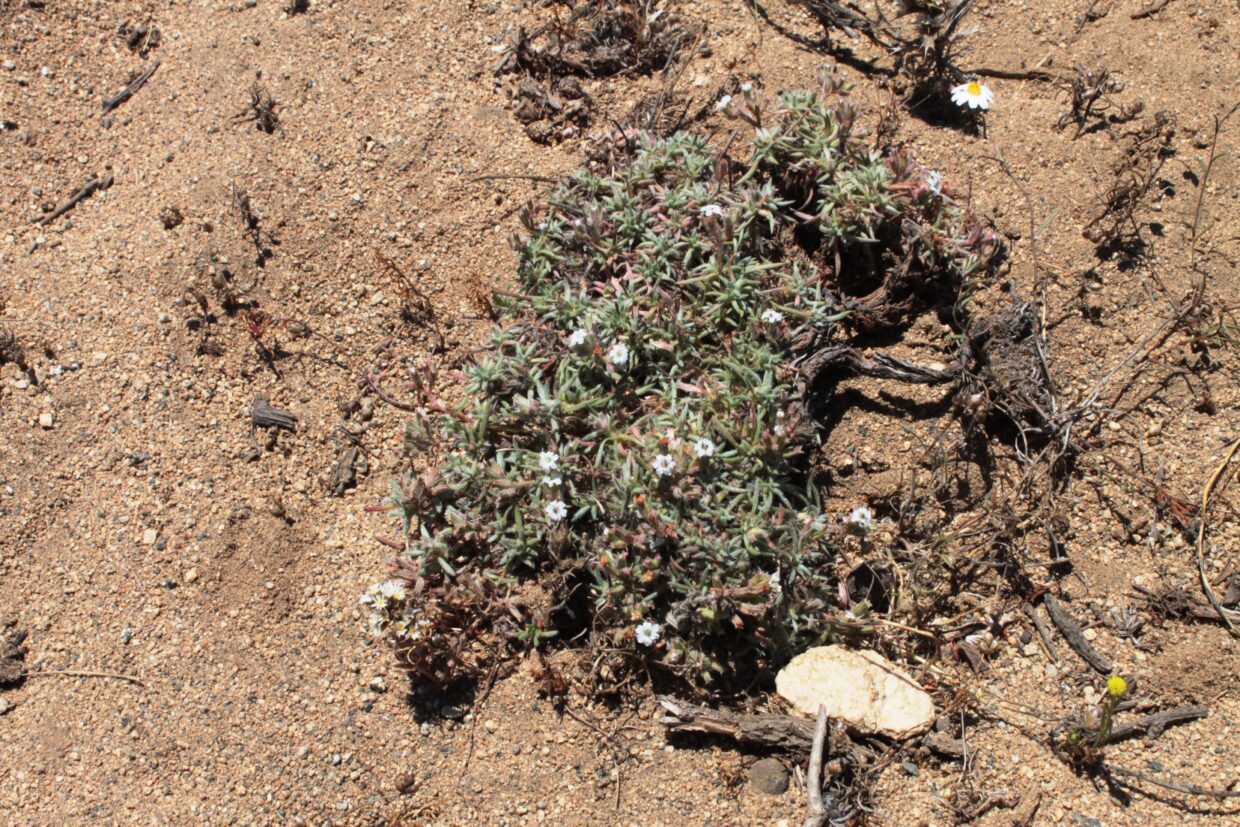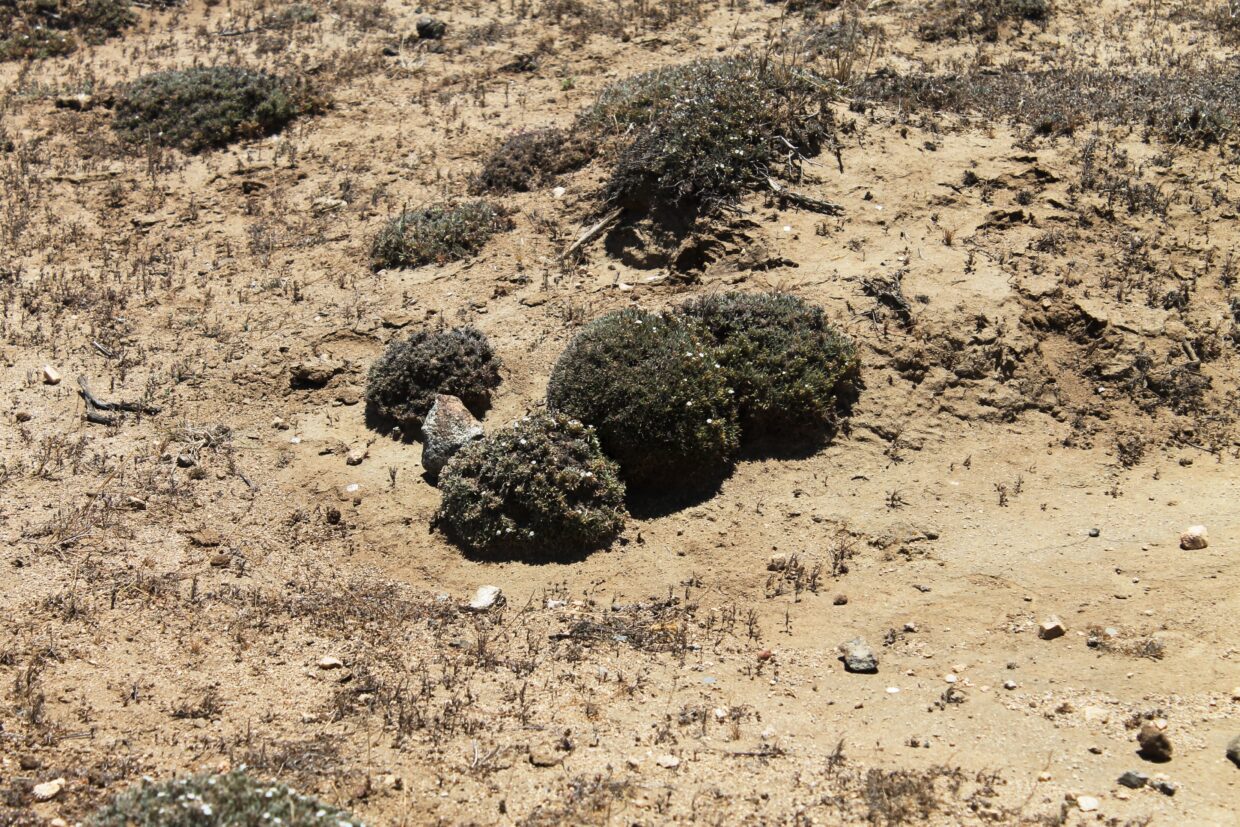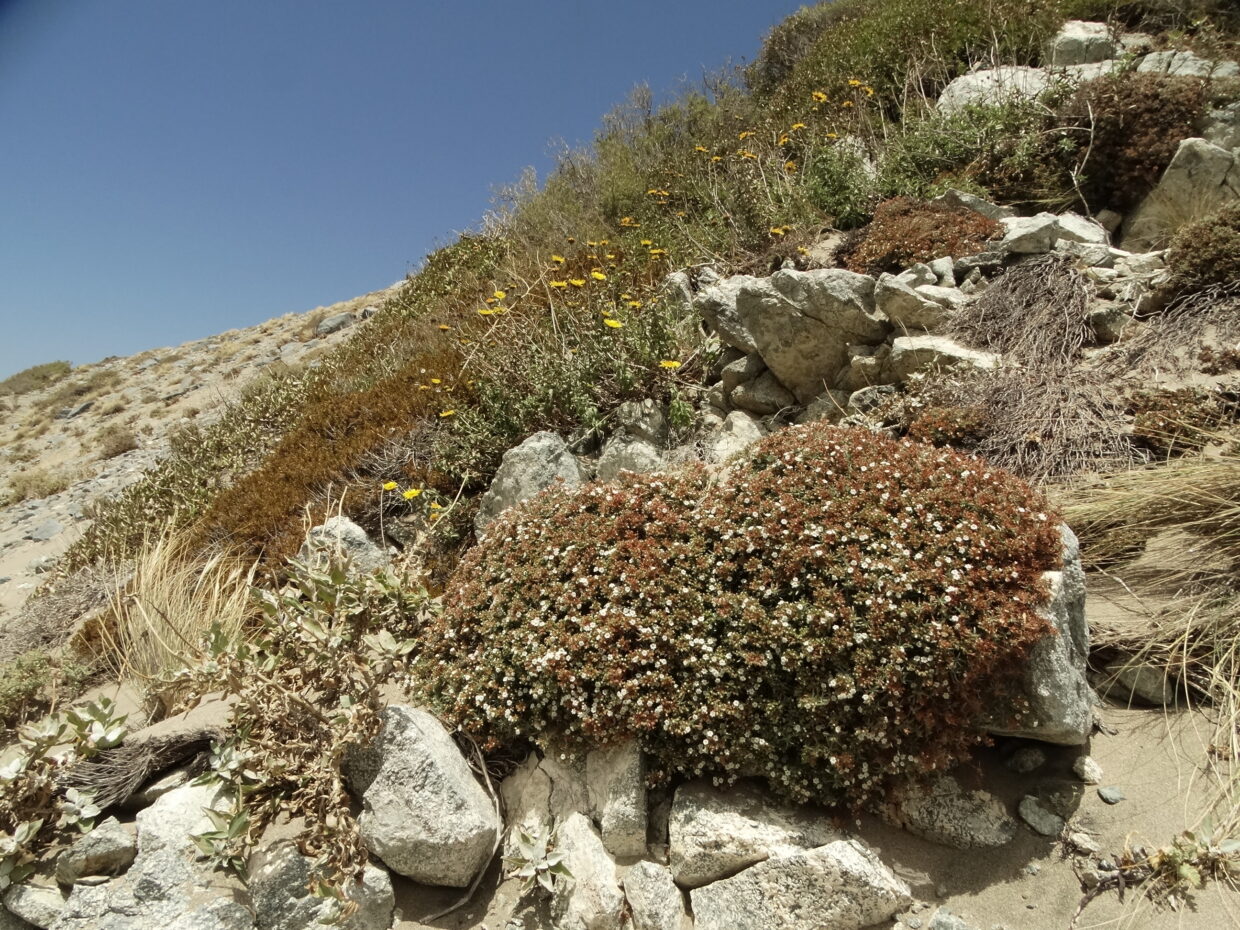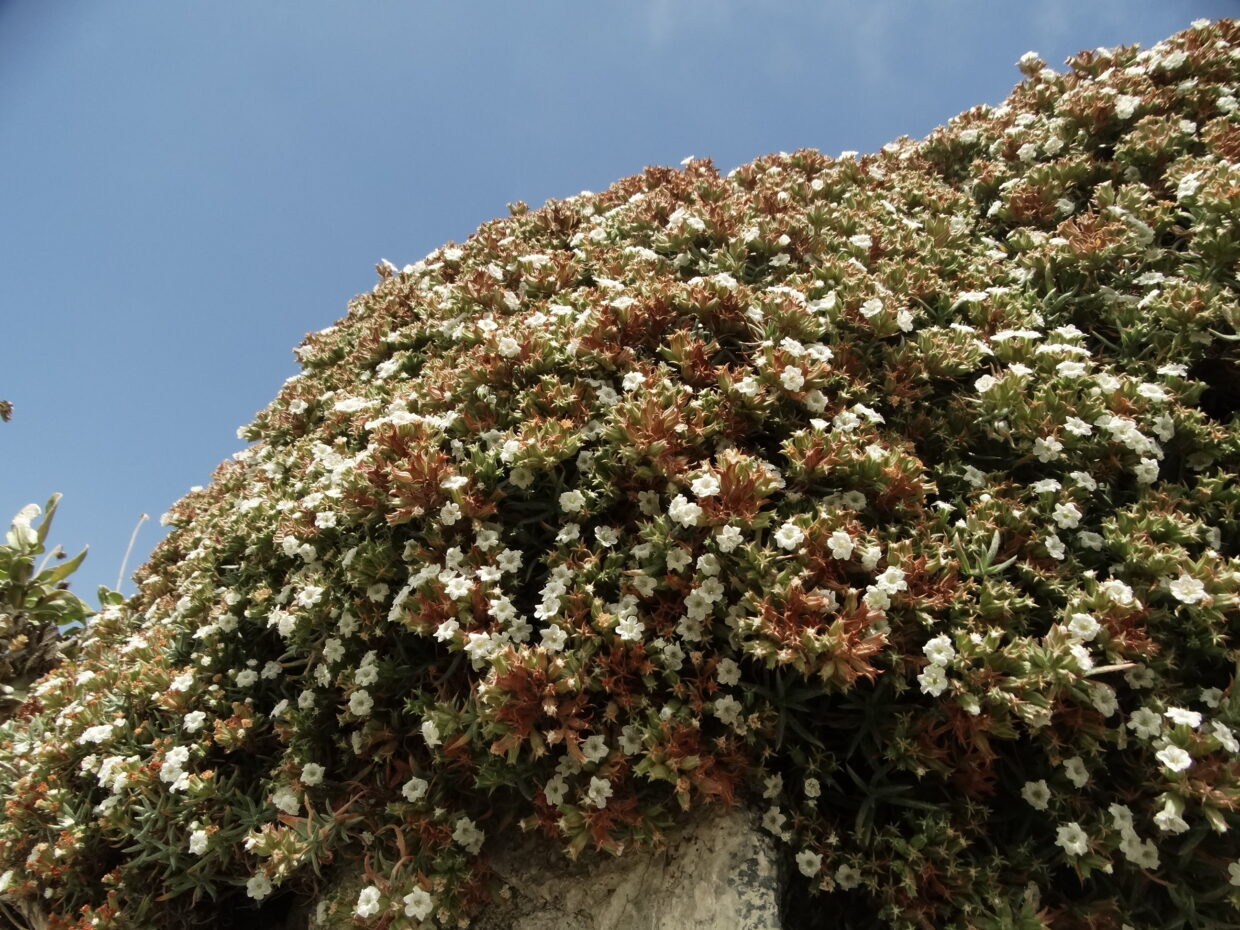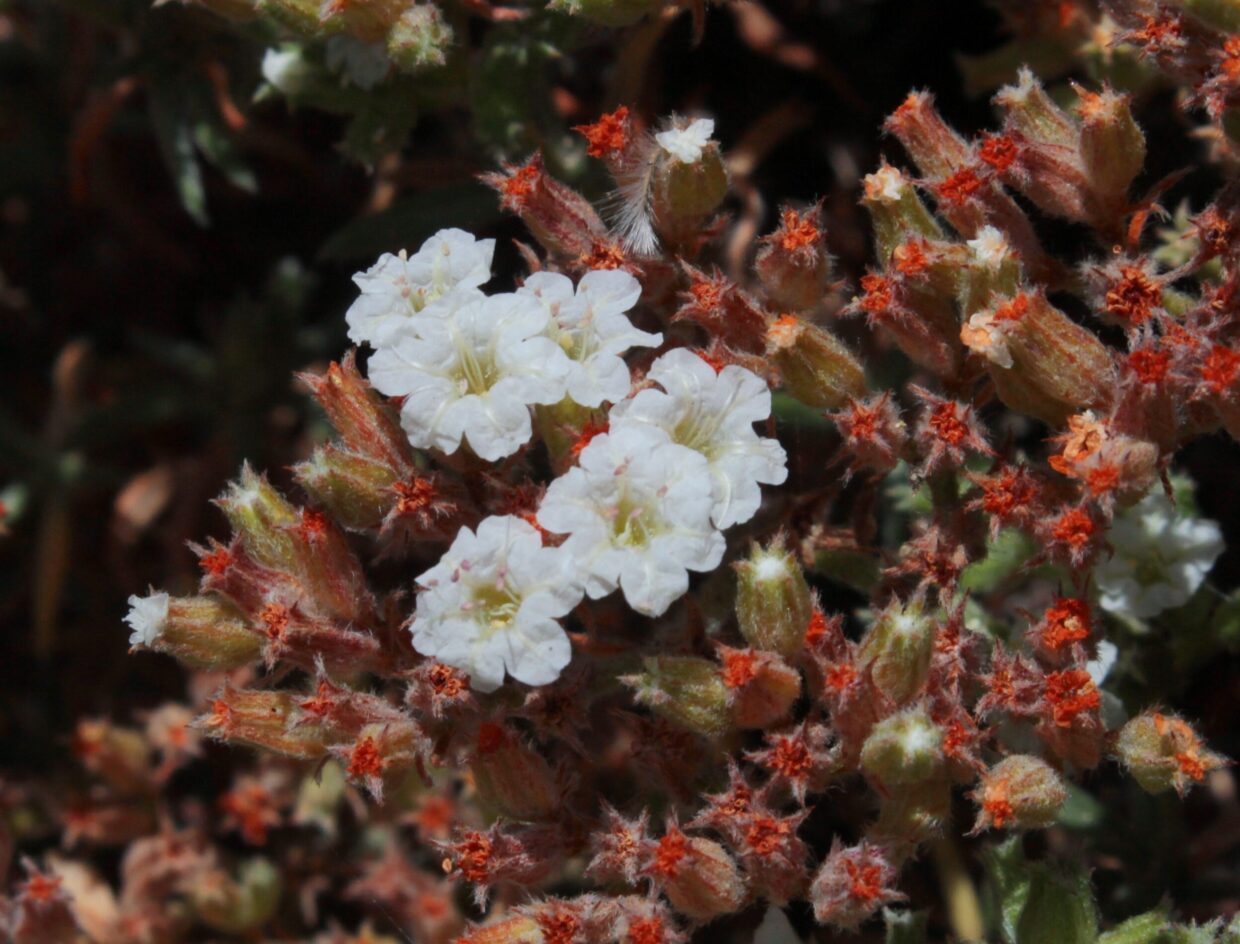Place of Publication
Gayana Bot. 79(1): 44 (2019)
Type citation
Chile, Región de Coquimbo, prov. Limarí, camino a la desembocadura del río Limarí, 30°47’22.04”S-71°37’47.97”O, 230 m s.n.m., 15-XI-2016, S. Teillier, J. Macaya, P. Novoa & O. Fernández 8188 (holotype: CONC; isotypes: SGO, JBN).
References
-
Teillier & Macaya-Berti (2018)
Teillier, S. and Macaya-Berti , J. 2018. Cinco Nuevas Especies de Chorizanthe (Polygonaceae—Eriogonoideae) del Norte de Chile. Novon 26(1):37-52
Iconography
- Teillier et al (2019): Figs. 8, 9
Regions
Distribution and habitat
Found in coastal areas from Parque Nacional Fray Jorge to Manso inlet in Pronvince Limarí. It has an altitudinal range of between 10-500 metres above sea level (Teillier et al., 2019)
Descriptions
- Teillier et al (2019)
Habit
Subshrub, with densely or loosely pulvinate woody aerial stems
Key characteristics
A species related to C. vaginata, which grows in the dunes in the southernmost part of the country. It differs, mainly, by the shape of the leaves, linear in this species and rhomboidal to lanceolate in C. vaginata (Teillier et al., 2019)
Notes
C. limariensis is a complex species due to its great variation in habit; usually forms squat cushions with the leaves in very tight rosettes, with the flowers in a terminal inflorescence, however, some specimens can be more lax with long lateral flowering stems. This typical cushion-like habit can be seen on the way to the mouth of the Limarí river; at the mouth itself, more loosely branched specimens were observed but with the prostrate stems. Another "form" is the population at Caleta Sierra, where the leaves are glabrous.





